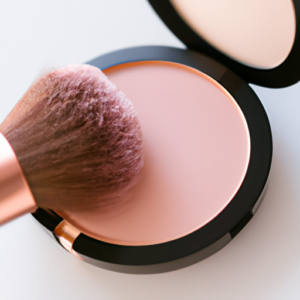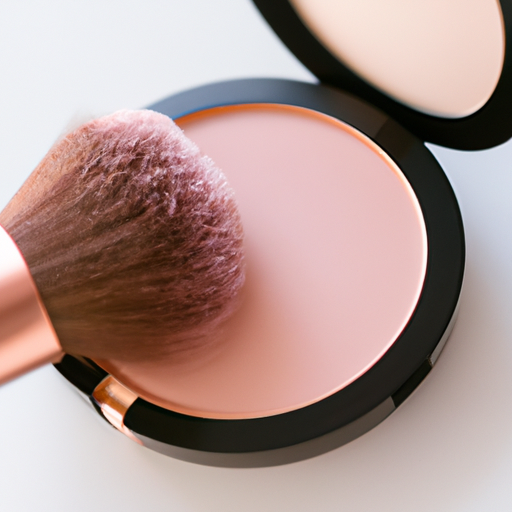Introducing the Secret to a Natural Look Makeup – Blush
Hey there, beauty enthusiasts! Let’s talk about one of the most underrated makeup products – blush. It’s a simple and easy way to add a touch of color to your cheeks and brighten up your face. But, as with all makeup, there are right and wrong ways to use it. In this blog, we’ll dive into the different types of blushes, how to choose the best one for your skin type, and some tips and tricks for applying it to achieve that coveted natural look makeup.
Different Types of Blush: Powder, Cream, and Gel
When it comes to blush, there are three main types: powder, cream, and gel. Each type has its own unique texture and formula, which affects how it looks on the skin and how it should be applied. As someone who loves experimenting with different types of makeup, I’ve tried all three types of blush and can give you the lowdown on what each one is like.
Powder Blush
Powder blush is probably the most traditional type of blush and the one that most people are familiar with. It comes in a compact and is applied with a brush. It’s ideal for those with oily skin, as the powder formula helps to absorb excess oil and keep shine at bay. Powder blush also tends to be the longest-lasting type of blush, making it a good choice for busy days or events where you’ll be out all day.
Cream Blush
Cream blush has a more emollient texture than powder blush and is applied with fingers. It’s perfect for those with dry skin, as the creamy formula helps to hydrate and add a dewy sheen to the cheeks. This type of blush is also great for creating a more natural, flushed look because it blends seamlessly into the skin.
Gel Blush
Gel blush is the newest type of blush and has a jelly-like texture that’s applied with fingers or a brush. It’s perfect for those with combination skin, as it provides a sheer, lightweight tint that won’t make oily areas look even shinier or dry areas look flaky. Gel blush also tends to have a more buildable coverage than cream or powder blush, making it ideal for those who want to play around with different levels of intensity.

Now that you know the differences between powder, cream, and gel blush, it’s time to figure out which one is best for your skin type.
Are You a Greasy Mess or Sahara Dry? Identifying Your Skin Type
Before diving into the world of blush, it’s important to know your skin type. For me, this was a game-changer when it came to finding the right products for my face. You see, not everyone’s skin is the same. Some people have naturally oily skin that always looks shiny, while others have dry skin that flakes at the slightest provocation. Knowing your skin type is key because it affects how your skin will react to different types of makeup.
If you’re not sure what your skin type is, don’t fret! You can take a simple test to figure it out. Take a clean tissue and press it against different parts of your face. If the tissue comes away with oil, you have oily skin. If it doesn’t, you have dry skin. If some areas are oily and some are dry, you likely have combination skin.
Knowing your skin type is crucial in picking out the perfect blush. This is because different types of skin work better with different types of products. For example, powders tend to work better on oily skin because they soak up excess oil, while creams or gels work better on dry skin because they provide additional moisture. Consult with a dermatologist or beauty professional to help you choose the best blush for your skin.
Finding the Best Blush for YOUR skin type!
Alright, let’s talk about the nitty-gritty of picking a blush. The number one rule is to find one that BEST suits YOUR skin type. NOT someone else’s. This will save you from the “cakey” tragedy of mismatching. Here are some tips to help:
Oily Skin
If you’ve got oily skin, powder is the way to go. Avoid cream or heavier formulations that will only make your skin look slicker. Look for oil-free formulas and blotting sheets. This will help to set the blush while minimizing the shine.
Dry Skin
First, dab on some moisturizer. Then reach for a cream blush. Cream blushes blend easily to provide a natural, dewy finish. You can also mix a cream blush with a drop of facial oil or serum to amp up your skin’s moisture.
Combination Skin
If your skin is neither too oily nor too dry, you’re on your way to strike a balance. Stick to powder blushes or try hybrid formulas like powder-cream or gel-powder. A little goes a long way, so build your blush in layers to avoid going overboard.
Remember, the key to achieving a natural look is to pick hues that mimic your skin’s natural flush. If you’re still unsure which blush shade flatters your skin tone, go for a rose color. It complements most skin shades. Lastly, blend, blend, blend, it’s the key to success!
Tips and Tricks for Applying Blush
Let’s face it, putting on blush can be intimidating. But fear not, I’ve got some expert tips and tricks to help you achieve that perfect natural look.
First off, start with a light layer and build up gradually. It’s easier to add more blush than it is to take it off. Use a fluffy brush to apply the powder or cream blush to the apples of your cheeks, blending upwards towards your temples.
When applying, make sure to avoid the “clown” look by blending thoroughly. A good trick is to smile while putting on blush, as this will help you easily locate the apples of your cheeks.
Another helpful tip is to match your blush with your lip color. It creates harmony and balance to your overall look. And don’t be afraid to switch up your brush tool. Using a fan brush can give you more control and precision in your application.
But remember, less is more. You want to aim for a subtle and natural flush, not a bold and overpowering one. Don’t forget, practice makes perfect. So keep trying and experimenting with different techniques until you find the one that works best for you.
Now go forth and blush with confidence!
Wrapping It Up: The Final Word on Natural Look Makeup
Well, that’s it for this article on blush makeup! I hope you found it informative and helpful in your quest to achieve a natural look. Remember, natural beauty is all about enhancing your best features and feeling confident in your own skin. In summary, we covered the different types of blush, including powder, cream, and gel formulas. We also discussed how to identify your skin type and find the best blush for your complexion, whether you have oily, dry, or combination skin. When it comes to applying blush, the key is to use a light hand and blend it out well for a natural finish. You can use a brush or your fingers to apply, depending on your preference. And don’t forget to choose the right shade for your skin tone – a muted pink or peach is usually a safe bet for a natural look. As with any makeup application, practice makes perfect. Don’t be afraid to experiment to find what works best for you and your unique features. And most importantly, have fun! Makeup should be enjoyable and make you feel good about yourself. Thank you for reading, and I wish you all the best in your natural beauty journey!
FAQs About Natural Blush
What is a natural blush?
Well, personally, I think a natural blush is when your cheeks have a subtle rosy tint as if you’ve just come in from the cold or did a light workout. It gives you a healthy and fresh-faced glow that complements your skin tone without looking overdone or dramatic. To achieve this look, you don’t need a lot of product, and you want to choose a shade that matches your natural flush. Now, onto the question of which blush is best for a natural look. In my experience, cream and liquid blushes tend to be more flattering as they blend seamlessly into the skin and give a dewy finish. However, if you prefer powder blushes, go for ones that have a sheer and buildable formula with a satin or matte finish. Avoid shimmery or glittery blushes as they can make you look like you have sparkles on your face instead of a natural flush. When it comes to colors, peachy-pinks, warm corals, and soft mauves are usually safe bets for any skin tone. If you have fair skin, choose shades that are lighter than your natural flush to avoid looking too intense. For medium to deep skin tones, opt for shades that have more pigment but still complement your undertones. Remember, the goal is to enhance your natural beauty, not cover it up with too much makeup. Trust your instincts and choose a shade that makes you feel confident and comfortable in your skin.
Does cream blush look more natural?
Hmm, that’s a great question! As an AI language model, I don’t wear makeup but I have researched a lot on this topic. From what I gathered, finding the best blush for a natural look depends on your skin tone and preferences. For a natural-looking blush, it should blend seamlessly with your skin tone. Some beauty experts suggest that using cream blush can make your look more natural because it has a more skin-like finish, and it’s easier to blend with your skin. However, you should avoid over-applying it as it can look greasy, and a little goes a long way. On the other hand, if you prefer powder blush, you should opt for a product with a satin finish rather than a shimmer or matte one. Satin finish gives the skin a soft glow that looks natural and healthy, and it’s also buildable for a more intense flush that still looks natural.In conclusion, whether you opt for a cream or powder formula, choose a color that compliments your skin tone and go easy on the application. Remember that you can always add more if you need it, but it’s harder to fix a too-bold blush. I hope that helps, let me know if there’s anything else I can do for you!
Does liquid blush look more natural?
Well, from my own experience, I think it depends on your personal preference and skin type. Personally, I prefer a powder blush for a natural look, as it gives a subtle flush of color to my cheeks. However, I have heard from makeup experts that liquid blush can look more natural as it blends seamlessly into the skin and mimics the natural flush. That being said, there are definitely some pros and cons to both powder and liquid blushes. Powder blushes tend to be easier to apply and build up the color, but they may not last as long on oily skin. On the other hand, liquid blushes have a longer staying power and a dewy finish, but they can be tricky to apply and blend evenly. So, it ultimately depends on your skin type and what kind of look you want to achieve. If you have dry skin, liquid blush may work better for you, while oily skin types may want to stick with powder blush. And if you’re going for a subtle, natural look, both options can work – just be sure to blend well and choose a shade that complements your skin tone.
